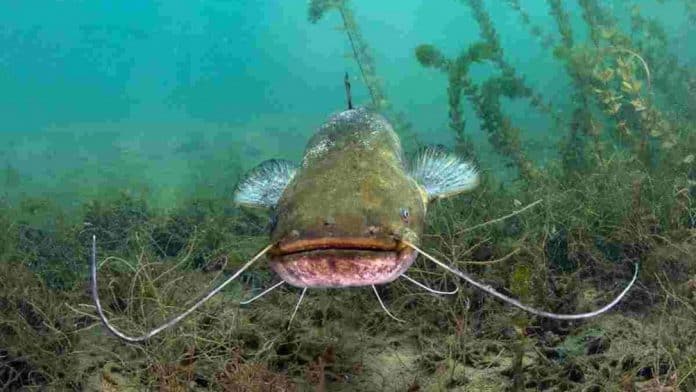I’ll teach you how to start a fish business in Nigeria but first let us start by a brief introduction into the subject.
Contents
Introduction
Fish farming or pisciculture involves raising fish commercially in tanks or enclosures such as fish ponds, usually for food. It is the principal form of aquaculture, while other methods may fall under mariculture. A facility that releases juvenile fish into the wild for recreational fishing or to supplement a species’ natural numbers is generally referred to as a fish hatchery. Worldwide, the most important fish species produced in fish farming are carp, tilapia, salmon, and catfish.[1]
In Nigeria, one of the most popular types of livestock farming you would see around you is fish farming – and it is for good reasons.
In the past, to eat fish, one had to go out to the fish market and buy river-caught fish. Those days are long gone. Today, modern farm practices have made it possible to grow fishes in farms and even have a say as to the number of fishes the farm should output.
Fish farming has become a very lucrative business and the growth in the sector is driven especially by the continuous rise and seemingly insatiable market demand for fish.
Hence, whether you are an existing farmer looking to expand the scope of your farm, or you are a complete newbie just getting your toes wet in agriculture for the first time, the prospect in fish farming is too great to ignore.
However, before a farmer starts a fish farm, there are several basic considerations to keep in mind. As lucrative as the business can be if one were to jump right in without gathering proper information, the outcome can be a devastating loss.
So, What is the Objective of Fish Farming in The First Place?
Fish farming is defined by the Food and Agricultural organization as the raising of fish for personal consumption or for profit.
The objective of any fish farm is to produce fish to meet market demands at a good profit. Notice from that statement that the whole essence of commercial fish farming is to meet market demands. Hence, without consistent demand for fish products in the marketplace, there would be no need to establish a commercial fish farm.
Where demand is given and the need for a commercial fish farm is established, there are three critical factors that can determine the success or failure of any fish farm project. Those factors are water quality, feed quality, and fingerlings quality.
How a fish farmer manages those three cardinal qualities, where market demand is a given, determines the viability of a commercial fish farm operation.
The Three Factors That Determine The Success Of A Commercial Fish Farm
Based on the above, we can isolate 3 key factors that you need to give attention to have a successful farm.
- Water quality: This is the most difficult part of fishpond management to sustain. As I pointed out earlier, fishes are coldblooded animals, and as such, water is not just where they live. The quality of water has a direct impact on feeding efficiency, the rate of growth, the health of the fish and their overall survival. The priority of the fish farmer here is to employ sound water management practices to ensure that the farmed fish have a stress-free environment to grow. To maintain water quality, the fish farmer must keep an eye on parameters like dissolved oxygen, temperature, turbidity, organic loading, ammonia levels, and fish density.
- Feed quality (and quantity): For a commercial fish farm, the recommended feeding practice is complete feeding through nutritionally complete fish pellets to have control over the rate of growth and fish nourishment. These pellets will supplement the natural food production of the pond and ensure that the stocked fish have enough food. Keep in mind that as the number of feed increases in the pond, there is a reduction in water quality marked by reduced dissolved oxygen in the water. This is as a result of the fact that fishes use more oxygen to feed and digest their food and the fact that naturally occurring organisms in the pond require oxygen to break down the byproducts of the feed. It is, therefore, better to use floating pellets as feed instead of those that sink to the bottom of the pond. Additionally, floating pellets indicate that the starch in the feed was cooked at the fish mill, and African catfishes do better when the starch in their feed has been cooked. Keep in mind that floating pellets are more expensive, so you will have to decide if it is worth the additional expense. A good practice is to add the pellets at 7 am and 5 pm daily, at the same spot. Maintaining the same feeding spot will train the fishes to learn to eat at that spot and enhance feeding frenzy to maximize feed consumption levels.
- Fingerlings quality: This depends largely on the hatchery where the fingerlings are sourced, and the transportation practice from the hatchery to your fish farm. So, while it is important to bargain for a low price of fingerlings, keep in mind that a good fish farmer should be willing to pay more for higher quality fingerlings as he knows that the success of his farm large depends on the survival rates of the fingerlings introduced. Also, note that very good quality fingerlings might be compromised by the way and manner it was transported to the farm from the hatchery. Ensure that whether transported in bags or tanks, enough oxygen levels are maintained and that you do not exceed recommended carrying levels (1kg of fingerlings to 10 liters of water).
Deciding on The Type of Fish You Will Farm
In deciding on the species of fish to grow in your commercial fish farm, keep in mind that fishes are cold-blooded animals. What this means is that all their body functions are determined by the temperature of the environment in which they find themselves.
With that in mind, it is critical that one selects fish species that are proven to do well in African waters. This ecological consideration can determine the sustainability of a fish farm operation.
 So, which fish will do well in Nigerian fishponds? Two species readily come to mind: tilapia and catfish. Of the two, the catfish has even better records in Nigeria and most fish farms owe their profitability to it.
So, which fish will do well in Nigerian fishponds? Two species readily come to mind: tilapia and catfish. Of the two, the catfish has even better records in Nigeria and most fish farms owe their profitability to it.
Here is the brief science behind that, and the reason why we would encourage you to grow catfish.
The natural habitat for African catfish, the type we farm in Nigeria, is calm and vegetative waters. In most of these areas, however, high fluctuations occur, going up in the rainy season, and very low in the dry season. This coupled with high levels of organic matter that flows in these waters especially during dry seasons put a strain on dissolved oxygen supply and results in elevated acidity levels.
To survive in these waters, the African catfish has adapted by:
- Oxygen adaptation: Developing a cauliflower-like organ which it uses to get oxygen from the air. This makes it possible for the African catfish to survive in water conditions that would be extreme for other fish species.
- Body makeup: The fish has no scales, but rather has a slippery mucous membrane on their thin skin, which enables them to burrow into mud when water levels drop. Additionally, it has barbells that allow it to sense food even when visibility has been reduced by organic matter or mud.
- The catfish is an Omnivore. This means that it can eat anything, which makes it easy to sustain the feeding of the fishes, which allows for a wide range of options in providing for its feeding. Even poultry droppings have been used widely with a good outcome. However, a drawback on the omnivorous nature of the catfish is that adult fishes can feed on smaller ones, hence the need for close management monitoring to sort fishes out according to their sizes.
- Social hunters and feeders: The social feeding nature of the catfish makes it best to feed them from a single spot to create a frenzy. This frenzied eating reduces both food wastages and therefore, fish production costs. This is an important factor since feeding costs are about 60% of fishery management costs.
Fish Farming Methods
The decision on management methods and the technology to be employed is best made after one has determined what the market needs. Keep in mind that the management methods you employ will have a direct effect on the quality of the product that you produce, and the price that your products can command in the market.
For example, if you decide to farm your fishes in the plastic pond, it would not perform as well as it would have if they were farmed in properly situated dugout ponds.
For example, the type of feed that you give to your fish will have a direct bearing with the quality of the fish that you produce (fat content, taste, etc).
Selecting A Location For Your Fish Farm
A farm situated close to the city would pay higher for land, as opposed to a farm that is situated in a rural setting.
In selecting your site, you would also consider the future cost of expansion, should you need to add more ponds to your farm. If your farm is close to the city, it may be more cost-effective to increase the capacity of existing ponds that you have, as opposed to digging out new ponds. This is because of the likely high cost of land closer to the cities.
However, a farm that is situated in rural areas will have better access to water, land and even labor at lower costs. Such a farm can afford to have large production units and even produce for the bulk markets.
Additional factors to consider in selecting your farm location
- Access to suitable land: You need land with good soil texture, access to water and with no history of flooding. On the matter of flooding, some have set up ponds, fed fishes almost to grow out stage only for a flood to ruin everything overnight. Make thorough findings before you jump on any site. There just might be a strong climatic reason why that seemingly excellent location is not currently housing a fish farm.
- Accessibility of the location: It is important to factor in the cost of transportation of both inputs to the farm and end products to the market to help determine what is in the best interest of the enterprise. Transportation costs add to the product cost, which has a clear effect on profitability.
- Availability of the market and market needs: If your sales strategy depends on retail directly to customers at the farm, it is better for your farm to be close to the market as possible. However, if you plan to sell in bulk, you can transport your products to the market periodically. Keep in mind that fish is highly perishable, so if you plan to transport live fishes across a distance to the market, you should invest in equipment that facilitates fish transportation.
- Activities on neighboring properties: All farmers should be careful to monitor what goes on in adjoining properties because of the impact that this can have on their fish farm production. For example, it would be dangerous to site a fish farm with earth ponds in a cocoa farm, because of the danger of chemicals wash offs from cocoa spraying activities. Similarly, you would not want to site a farm close to a factory where effluents enter your water sources. Such effluents have an impact on the quality of water, and by extension, the performance of your fishponds.
- Utilities and road network: You would need electricity to pump water in and out of your ponds, and a source of water like a borehole for the ponds if your farm is not situated close to a natural body of water. Additionally, a good road network between your farm and markets will improve accessibility and reduce your operational costs.
Consider adding value to your fish
On a final note, once your fishes have attained the desirable sizes, you need to sell them off; otherwise, you will have to continue feeding them which would not be cost-effective.
It is also advised that when sales cannot meet up with production volumes, consider adding value by either smoking your fish of filleting them, which eliminates the need for ongoing feeding of market-ready sizes.
Suggested Reading: 5 Steps To Your Biggest Sale of 2020 This Black Friday
That way, you get to make profits beyond the traditional 10-30% that is common form fish farms in Nigeria.
As you consider whether fish farming is the best way to go, I wish you the best in your endeavors.
The market opportunity for the African Catfish in Nigeria and Overseas
Apart from the favorable biological characteristics of the catfish, there is both a local and regional market for the fish, as well as a growing overseas market sustained by the immigrant population from West Africa. These make catfish a great candidate for commercial fish farming.
Currently, there is a significant shortfall in the supply of fish in Nigeria, which is a result of poor fishing practices like overfishing. The demand for fish locally has naturally continued to rise with the rapid growth in the population of the country. This demand cannot be met by existing fish farms, which validates the clear market need for more sustainable fish farms to be set up in the country.
However, while we have established there is a market for catfish, it is still important that you determine a local market for your products, especially if you are not considering processing the fish beyond harvest.
Surveying your market and determine their true needs
Keep in mind that it is one thing for people to tell you in a survey that they would buy fish from you if you had fish and quite another thing for them to really buy the fish that you sell when you eventually do.
What I recommend that you do is take your survey beyond a question and answer model and give it more life. In other words, put your potential market on the spot and test how much fish you can sell to them on a good day, and what buyers have to say about the fish that you are selling.
Wondering where you would get fishes from to carry out your test?
You would buy them from existing fish farms, of course!
Do you think that is expensive? Truth is; it is far cheaper than starting a farm that fails just because people cannot pay you what you were hoping to get per kg of fish. Besides, the insights you will gain from both buying from other farms and selling to your potential customers will be more valuable than the amount you spend.
Know your product
Extending from the survey, you should be able to tell what kind of products your market needs, and whether they want it alive, fresh, filleted, or smoked. Knowledge of the quality of your product also presents an advantage during negotiations. For example, with a restaurant as a client, you should be able to supply standard size and guarantee the availability of that size on demand. If you are supplying to an intermediary like a food processor, you will be required to keep adequate records of the feeding practices you employed in growing your fish. This will lend your processes the traceability required to access those markets.



























Hello there, I will like to know more about fish farming,how to set up the business, but I am based in Benin City .i will be very grateful if my comment is attended to. Thank you.
This is actually a complete article on things you should know about fish farming, regardless of location. Kindly let us know what you would love to know and we would definitely get back to you